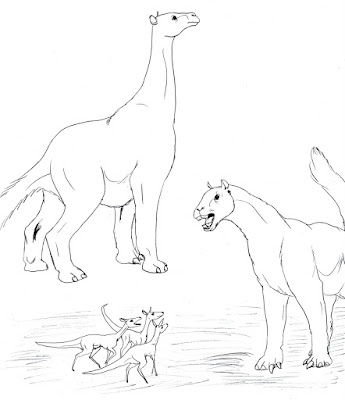The Armadillos: Family of the Week!

I kept the modern family of armadillos in tact for the Metazoic, the Dasypodidae. It is a family we are familiar with now, but with a few minor changes. They have gotten bigger. Of course the species of Dasypus are still around for at least part of the Metazoic, as well as a smaller species I called Thoracolagus , which is the tiniest armadillo of the Metazoic. They are not as tiny as the modern Pink fairy armadillo ( Chlamyphorus ), which is today's smallest species, about the size of a rat, but Thoracolagus comes in a good second, being the size of a small rabbit. The largest species will appear during the late Metazoic era. They are the species in the sub-family Dasyventrinae. They include the species of Grammoclavia and Dasyventris . These species are so big, they cannot even roll into a ball like other armadillos can. Today, the largest armadillo is in fact the giant armadillo ( Priodontes ), which can reach a length of about 5 feet. But the largest species of the Metazoic,...



